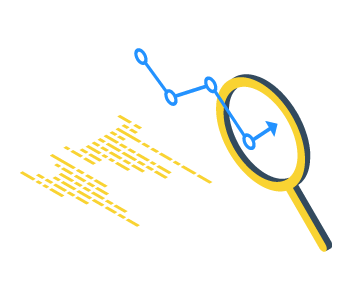WHITEPAPER
Trusts and Technology: Private Wealth Management in the Digital Age

Executive Summary
Introduction
In private wealth management thus far, technology has focused on client static data management, streamlining onboarding of new business and enabling timely compliance of regulatory filings.
The next phase of digitalisation means the full automation of trust administration and managing data to go beyond simply meeting client and regulatory obligations. Instead, technology must be used to provide a service that exceeds client expectations and reclaims employees’ time to focus on value- added client relationship and business development activities.
The path to automated trust administration
By embracing digital transformation, firms can reap benefits in four key areas:
• Revamp the client experience
• Boost competitiveness
• Enhance staff satisfaction
• Increase resiliency and innovation
Outsource vs In-house
Digitalisation is a major undertaking requiring specialist capabilities. In today’s complex, fast-paced world of surging expectations, deep technological and quant expertise has never been more important. Meeting those needs in-house can be costly and time-consuming.
A comprehensive software solution and well-run managed service can alleviate the pain of developing and maintaining an institutional-grade data management, risk analysis and reporting set-up. But it has to be done right.
Time for action
Data-driven digital solutions have become table stakes for fiduciaries. This is not some far-off, future state to which firms should aspire. Clients’ digital service expectations are pressing, and fiduciaries need to deliver.
Automating trust administration is the answer. But it takes expertise and a sophisticated technology backbone. That leaves fiduciaries with a choice. Undertake the investment and implement the capabilities in-house, or partner with a specialist third party. Just don’t delay taking it.
Like almost any modern business, success factors in private wealth management include high levels of client service, robust data processes and the ability to attract and retain colleagues. These combine to form the bedrock of a firm’s reputation among its clients, its intermediary network and in recruitment markets.
There is a strong case to be made that, of these factors, the most important relates to data. Data underpins the ability to provide high levels of timely client service, while also ensuring that performing key tasks is simple, painless and cost effective.
Thus far, digital technology has typically focused on client static data management, streamlining onboarding of new business and enabling timely compliance of regulatory filings. The logical next phase of digitalisation must surely relate to how best to manage data to go beyond simply meeting table stakes obligations. Instead, it must be used to provide a service that exceeds client expectations and reclaims employees’ time to focus on value- added client relationship and business development activities.
Embracing full digital transformation is rapidly becoming the most robust way to meet those responsibilities – optimising process efficiencies to enhance profitability and drive scalable growth.
That is nigh-on impossible with the way many fiduciaries manage their data and reporting processes today.
Ever more disparate, complex, and generally unstructured data now drives the finance world. And volumes are mushrooming. Firms’ competitive edge rests on managing this data productively. Yet so much of the data fiduciaries receive still comes in hard copy format or is embedded in Excel files, PDFs, online documents and the like.
Manually sourcing, validating and consolidating data from these multiple sources creates a host of problems.
Manual intervention is error-prone and time- consuming. Book-keeping integrity and timeliness may be compromised. Slow access to information makes it difficult for firms to track positions and transactions, monitor information in the event of a need to know the level of exposure to a country or asset type, respond to client requests and deliver accurate reporting in a timely fashion. These inefficiencies have a direct impact on margins and recoverability – and mean that the processes cannot be scaled. A reliance on mundane, repetitive tasks may also fuel staff turnover and key person risk, damaging morale and heightening the danger that knowledge of mission-critical manual processes will be lost.
The result? At best, fiduciaries will struggle to differentiate themselves from competitors. More likely, service quality will fall short of client expectations. And firms risk compliance lapses and litigation if material breaches occur. All of which are hardly conducive to growth and maximising profitability.

Don’t miss the digital boat
Implementing a data-driven, digital framework offers fiduciaries a brighter alternative. By embracing digital transformation, firms can reap benefits in four key areas.
Revamp the client experience
As clients become exposed to more and more sophisticated digital experiences across all areas of life, expectations of the service they receive from their fiduciaries will grow and evolve in tandem.
Data is the cornerstone of a modern digital service offering, the foundation on which trustee decisions, risk management, performance analytics, consolidated reporting and processing efficiencies are built. But clients don’t want to be buried by information.
Instead, they are looking for enhanced insights – useful, usable, personalised analysis that makes sense of the data overload and presents easy-to-understand conclusions that can be applied in the real world.
Timeliness matters too. We operate in a fast- paced, increasingly real-time world, where outmoded data equals heightened risk and missed opportunities. Clients, especially the younger generations, expect the information they receive to be up to date. Tolerance for reporting delays and data inaccuracies is eroding fast.
Clients also want fingertip access to this rich flow of timely information. They require modern, easy-to-use applications with an intuitive dashboard displaying all their key information in an attractive, digestible format, with the flexibility to look-through, manipulate and consolidate data at any level.
Successful firms will be those that commit to delivering a seamless, responsive digital service that provides value to clients, and stays current with the latest capabilities to meet their shifting expectations.
Firms that embrace the challenge will benefit from multiple, frequent touchpoints with clients, giving them more opportunities to add and demonstrate value, and reinforce the relationship. Fiduciaries will be rewarded with an enhanced reputation for good service, which will feed through to greater customer loyalty, stronger brand credentials and less price resistance – all of which help to augment their competitive position.
Boost competitiveness
Industry competition is like an immutable law in physics: an ever-present force exerting constant pressure on market participants. Expert data management and digitalisation can alleviate the pressure by equipping firms with powerful competitive advantages. When data is leveraged and disseminated effectively, fiduciaries can enhance control over all their assets (including private and alternative assets), not just investments. Downstream, that means improved risk management, delivery of more accurate and timely client services and increased internal processing efficiencies.
Establishing automated connections to a fiduciary’s full sweep of banks and custodians allows firms to obtain ready access to all their positions and transactions, and shift to an exceptions-based reconciliations environment. Task alerts with automated reminders help keep staff on top of assigned responsibilities and direct them to priority issues that need resolution, further optimising operational efficiency.
Using data-driven, sophisticated risk management and analytics tools, firms can monitor and manage exposures by any criteria, and produce granular performance contribution and attribution calculations. Daily limits monitoring, with alert notifications and pre-warning levels, maintain adherence to investment policy statements and guard against potential compliance breaches. Client, regulatory and management reports populated with trustworthy, timely data help enhance investment performance, customer satisfaction and compliance. The efficiency and information improvements in turn help fiduciaries expand into new areas, win additional mandates and scale their business.
The challenge for many fiduciaries though, lies in the infrastructure execution. It requires:
- Establishment and maintenance of data pipelines to source what are often fragmented and non-standardised datasets. Automating the data sourcing enables daily data delivery in a consistent format, something that is almost impossible in a manual environment.
- Transformation of the sourced data into a single standardised schema, then storing it in a flexible database so it can be processed systematically.
- Enriching the raw data custodians provide with descriptive metadata from secondary sources – such as prices, volumes, volume- weighted average prices, market capitalisations, sectors and ratings – to add colour and granularity for downstream use.
Implementing this kind of robust, data-driven, digitalised automation takes sophisticated IT engineering and financial data knowledge.
Without the right mix of human expertise, technology and data, the cost and risk of calculation and reporting errors is huge. And it is no one-time investment. New technologies and regulatory initiatives are emerging all the time. Firms must keep pace if they are to sustain the competitive advantage that high- quality data and digitalisation bring.
Overview of a typical data and technology ecosystem in a Sesame implementation
Enhancing staff satisfaction
Industrialising the data management environment is essential not only for digitalising the client experience, but for future-proofing fiduciaries’ internal operations.
The pandemic-induced “Great Resignation” has elevated staff turnover rates across the industry. The movement may be transitory but has highlighted some fundamental issues fiduciary firms will do well to address.
Key person risk is one. As well as being time- consuming and inefficient, manually-oriented data and risk management processes create pockets of expertise, in which a handful of staff understand the intricacies and idiosyncrasies of the procedures that have developed over time – leaving firms exposed when those people leave. Reducing reliance on these pockets of internal knowledge by introducing automation wherever possible helps limit firms’ business risk.
Optimising employee activity is another priority. Automation allows staff to spend less time on mundane manual data processes. That frees them to focus on more high-touch client interactions, building and maintaining relationships, and business development.
Minimising the manual burden can also bolster staff retention and recruitment. Boring grunge tasks offer little mental stimulation or gratification, and unfulfilled staff have limited incentive to stay with their employer. By eradicating those unrewarding processes, teams can dedicate their time to more interesting, value-adding activities. That promotes job satisfaction, boosts morale, limits staff turnover and helps firms attract top talent.

Increase resiliency and innovation
Competition and ongoing industry consolidation, with the emphasis on economies of scale they bring, are putting a sustained squeeze on margins and budgets. At the same time, fiduciaries must continue to invest if they are to keep up with their peers and market requirements.
- Client service expectations call for ever more sophisticated technology capabilities able to deliver a fully-rounded, responsive offering
- Portfolio diversification in search of stronger risk-adjusted returns requires access to more data sources and advanced risk management tools to monitor and control exposures
- Tightening rules and regulations are upping the pressure on firms to maintain data integrity and enhance transparency
- Unrelenting cybersecurity threats demand the latest security protections and a culture of unwavering vigilance
Legacy systems are ill-equipped to meet these demands. They are costly to maintain, especially where they run on internal servers, and require significant ongoing investment to keep up to date. Plus, the siloed systems and operating models that have typically developed over time often make it difficult for firms to establish a clean, consolidated data environment that can furnish them with a single source of the truth.
Which is why a modern data and reporting infrastructure has become so important. Efficient data collation, cleansing and dissemination help fuel better investment decisions and allow diversification into new areas. Service innovations – whether it’s rolling out digital portals, developing new reporting capabilities or fostering value-enhancing client/ manager interactions – similarly depend on quality data. Automation gives firms a scalable platform on which they can grow. And robust embedded security controls help counter today and tomorrow’s cybersecurity risks.
Cost constraints
The problem is that a fit-for-purpose infrastructure does not come cheap, or easy.
It requires multiple, expensive data feeds with third-party vendors, a database to store the data, a sophisticated risk engine to produce a full suite of analytics, and flexible reporting system to generate and distribute the reports.
Expert human resources are also vital. They include IT support staff to implement and maintain the technology, a risk manager to oversee all the risk processes, a quant/risk analyst to provide modelling support and produce the analytics, and data analysts to input the relevant data and keep it current. Total expenses per year often run into the millions.
Smaller fiduciaries and start-up firms may struggle to find the budget or be unwilling to invest their limited capital in the necessary infrastructure. Even for bigger players, the cost, complexity and hassle of sustaining the requisite data and reporting excellence pose a huge, ongoing burden. And by directing resources to the mechanics of data management and reporting, and away from searching for new investment opportunities, monitoring investments and servicing investors, performance and client relationships may suffer.
The outsource solution
The alternative is to outsource to a software solution, supplemented with managed service expertise.
Landytech’s automated trust administration software, Sesame, provides advanced administration support for fiduciaries, including seamless data consolidation from multiple sources, systematic alerts to mitigate business risk, customisable risk and performance analytics, and automated client and regulatory reporting. Solutions like Sesame provide fiduciaries with superior administration services at a fraction of the cost of implementing and maintaining the capabilities in-house.
Digitalisation is a major undertaking requiring specialist capabilities. In today’s complex, fast-paced world of surging expectations, that expertise has never been more important.
A comprehensive software solution and well- run managed service can alleviate the pain and cost of developing and maintaining an institutional-grade data management, risk analysis and reporting set-up. The right provider will:
- Have devoted significant investment to establishing automated data feeds, managing the data, and implementing and integrating a scalable system infrastructure.
- Employ teams of finance and quant experts with the requisite risk and technology skillsets to support the systems and calibrate the risk models to meet fiduciary clients’ asset mix and individual needs.
- Deliver timely, high-quality results on a range of advanced risk and performance analytics (including different portfolio sensitivities, customisable scenario analyses, stress testing and performance attribution), often at a fraction of the cost of producing them internally.
- Generate accurate regulatory reports to tight deadlines.
Partnering with an expert managed service then leaves fiduciaries free to focus on those revenue-enhancing activities where they can add most value, such as investment research, capital raising and investor relations.
Dedicating their efforts to the firm’s core competencies, and partnering with an expert to handle the rest, enables fiduciaries to better serve their clients’ interests and justify the fees charged.
Outsourcing can also increase internal teams’ efficiencies and enhance competitiveness. Plus, the ready scalability a managed service provides, and flexibility it gives fiduciaries to direct their limited resources to where they count most, helps firms’ ability to grow, and do so profitably.
Making the right outsourcing decision
Outsourcing data management, risk and reporting can be a game-changer for fiduciaries’ digital transformation efforts. But like any relationship, success depends on selecting a well-matched partner.
Perils of the wrong provider
Not all third-party providers are created equal. And picking the wrong one can leave fiduciaries with a host of problems, not least:
- An inability to deliver the desired risk analytics, portfolio insights, and client and regulatory reports.
- Expensive adaptations to get the service running.
- Budget overruns, delays and missed targets.
- Loss of staff, client and regulatory trust in the outsourcing programme.
- Unhappy clients and a deterioration in those relationships, resulting in mandate withdrawals.
So, what should fiduciaries look for in an outsourcing partner?
Essentially, the provider needs to offer a complete data and reporting solution. That requires a strong technology infrastructure able to process huge amounts of data. A platform like Sesame, built on open architecture connectivity principles can facilitate data consolidation and aggregation by allowing easy plug in of data feeds to ensure data can be taken from relevant third-party sources. Sophisticated APIs enable ready integration with existing internal systems.
The flexibility to respond to client requests (for example, to incorporate stress tests for
Covid-19 and climate change, or provide customisable scenario analyses), and tailor reports to end-user specifications are similarly crucial. As is the ability to carry out compliance tasks in accordance with existing and new regulations. Having the resources and willingness to change the system to accommodate market developments, regulatory initiatives and evolving client demands also builds in a level of service futureproofing for users, ensuring the partnership is there for the long haul.
The value of a robust yet flexible technology capability is limited without proven data management, quant risk and reporting expertise. Supporting fiduciaries’ client and regulatory responsibilities, and meeting best practices, takes in-depth knowledge of the end-to-end processes involved. And providers must show they can deliver results at scale, to give clients comfort they will receive the high-
quality, responsive support they require, when they need it.

Time for action
Data-driven digital solutions have become table stakes for fiduciaries. This is not some far-off, future state to which firms should aspire. Clients’ digital service expectations are real now, and fiduciaries need to deliver.
However, the way many industry participants manage their data and reporting processes today is stymieing their attempts at meaningful digital transformation. The data environment gets more complex by the day, and manual processes are no longer up to the task.
Automating trust administration is the answer. But it takes expertise and a sophisticated technology backbone. That leaves fiduciaries with a choice. Undertake the investment and implement the capabilities in-house, or partner with a specialist third party. Just don’t delay taking it.
About Landytech
Landytech provides advanced administration support for fiduciaries, including seamless data consolidation and aggregation from multiple sources, systematic risk controls to mitigate business risk, customisable risk and performance analytics, and automated client and regulatory reporting. With no set-up fees and a flexible cost structure, its Sesame platform provides fiduciaries with superior administration services at a fraction of the cost of implementing and maintaining the capabilities in-house, and without any of the strain.
To learn more about how we can help you transform your trust and corporate administration processes, head to www.landytech.com/for-fiduciaries
